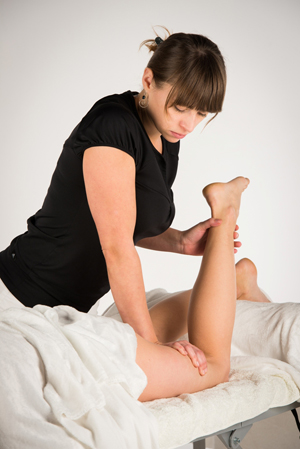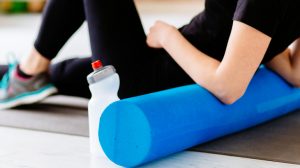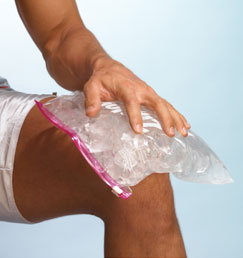What is The Best Kind of Massage?
One of the best parts of running a massage business is that you get to meet so many different people. The stories and personalities mold and shape the Boston Bodyworker community. We are fortunate to spend time with so many amazing people who are doing such remarkable things for not only themselves, but also charity. It seems that every weekend throughout the year, there is another charity run, ride, climb or obstacle challenge. The biggest of course are the Boston Marathon in April and the Pan Mass Challenge, which was this past weekend. To be able to be a small part of the lives of these amazing individuals who sacrifice so much of their time and bodies to raise money for others is a blessing onto us here. Did you know that the Pan Mass has raised over $455 million dollars for cancer research? At The Boston Bodyworker, what fuels us is helping those who strive to help others who are less fortunate. It requires a lot of hard work and discipline to achieve what they do. However, these athletes can hit snags in their training or perhaps become injured along the racecourse. We love being able to get them back in the saddle and onto their next great feat.
 Unless you have buried your head deep in the sand, you have likely heard that massage may be an excellent form of care for our bodies beyond simple relaxation. Regardless of whether you are training for the grueling miles that lay before you in the Pan Mass challenge or you are subjugated to the confines of a cube day in and day out. Massage can be a great benefit for so many of us. Being a massage therapy business owner for over 20 years, I have been asked time and again what is the ‘best’ kind of massage? Is it Deep Tissue, Sports Massage, Myofascial Release, Trigger Point or Active Release Technique®? (to name a few). The answer I give is always the same; “It depends”. I know this seems like a cop out of an answer, but the fact remains that the answer is not so simple. Massage has been around for 1000’s of years and only in the last 100 or so have people started to classify massage into neat little ‘techniques’. The fact remains that in order to achieve the desired response to a massage, your therapist must be paying close attention to how YOU are responding to their touch.
Unless you have buried your head deep in the sand, you have likely heard that massage may be an excellent form of care for our bodies beyond simple relaxation. Regardless of whether you are training for the grueling miles that lay before you in the Pan Mass challenge or you are subjugated to the confines of a cube day in and day out. Massage can be a great benefit for so many of us. Being a massage therapy business owner for over 20 years, I have been asked time and again what is the ‘best’ kind of massage? Is it Deep Tissue, Sports Massage, Myofascial Release, Trigger Point or Active Release Technique®? (to name a few). The answer I give is always the same; “It depends”. I know this seems like a cop out of an answer, but the fact remains that the answer is not so simple. Massage has been around for 1000’s of years and only in the last 100 or so have people started to classify massage into neat little ‘techniques’. The fact remains that in order to achieve the desired response to a massage, your therapist must be paying close attention to how YOU are responding to their touch.
Lets start with the most commonly used term when someone is seeking a massage, but doesn’t want any of that relaxing, foo-foo stuff they see in spas. They will typically request a ‘Deep Tissue’ massage. However, clients will typically determine the depth of the treatment based upon the amount of pain that they feel. If it doesn’t hurt, the therapist wasn’t going ‘deep’ enough. If it hurt a lot, the therapist went very deep. The fact remains, that we all experience pain in different ways. What one may consider ‘deep tissue’ another may feel the therapist didn’t go deep enough, yet the exact same amount of pressure was being applied. Depth of pressure does not directly correlate with levels of pain.
In order to appreciate a ‘Deep’ massage, a therapist must slowly work through layers of connective tissue in order to have an impact on the deeper layers of muscle tissues. This process is not only a slow and methodical one, it also varies in success from client to client. Personally, I have successfully treated patients using very little pressure, yet they report the level of pain they are experiencing on a scale of 1-10 is around a 7. Other times, I have been elbow deep into a patient’s low back while they were snoozing away in la-la land.
The key to a successful Deep Tissue massage is finding a therapist that understands the concept of “matching tissue tension” and knowing how to respond to a muscle when it reacts when an external stimulus is applied. If done properly, a true Deep Tissue massage should ‘hurt so good’ and for the most part be a pleasant experience.
Where buzz words like Sports, Trigger Point and Myofascial massages start to come into play is when clients are uncertain about the ‘type’ of massage they need. They hear terms such as these being thrown around and assume THIS is what they ‘need’. What they are really suggesting is what they DON’T want; a basic relaxation or ‘Swedish’ massage. This is the number one reason why I began to use the term ‘clinical’ massage. I wanted to help people better understand what a good massage could offer.
No one goes to their cardiologist and asks for an angioplasty or a cardiomyoplasty. Why not? Because they wouldn’t begin to tell the Cardiologist how to do their job. What if you went to your Cardiologist reporting chest pain and demanded that they perform a Transmyocardial Revascularization because your running buddy who also had chest pain got one and he was back in no time at all. Should the doctor go ahead and do it or should he give you some Pepto-Bismol for what really amounts to some indigestion? The point here is there is more than one way to treat the heart (a muscle) and there are qualified experts who can determine this. There are also multiple ways to treat other muscles in our body. It should never be up to the client to need to determine what the best ‘technique’ should be.
Regardless of whether you receive a massage with us, a good therapist is well versed in multiple approaches of massage therapy. Lets call it a ‘clinical’ approach to massage. When you are on the table, he/she may perform a variety of styles of massage along different parts of your body such as some cross-fiber friction to help in the removal of some adhesions or some active engagement techniques to help restore range of motion (Sports Massage) or perhaps they will find a tender point that is referring pain to another area (Trigger Point) or maybe you don’t respond well to either of these methods because you are more sensitive than others and you would benefit from some slower, long holding, traction to the superficial tissues that will help in reducing trigger points and breaking up adhesions (Myofascial Release).
 My point is that throughout the course of a ‘clinical’ massage, your therapist will implement many different ‘techniques’ in order to achieve the outcome that elicits the proper responses from the connective tissues. It is not uncommon for all of these approaches and many others to be utilized within a single treatment.
My point is that throughout the course of a ‘clinical’ massage, your therapist will implement many different ‘techniques’ in order to achieve the outcome that elicits the proper responses from the connective tissues. It is not uncommon for all of these approaches and many others to be utilized within a single treatment.
Another facet of a massage to keep in mind is that although ‘relaxation’ may not be what you are seeking, your body is. This is why it is so important for a therapist to always be listening to what they are both palpating and seeing. By being observant to the clients overall responses and openly communicating with you, they will help to calm your autonomic nervous system (sympathetic & parasympathetic), the one that regulates the functions of our body. By bringing the body from a state of ‘fight or flight’ (sympathetic) to a state of ‘rest and digest’ (parasympathetic) a good massage can assist in regulating homeostasis (balance). This is why many people in the midst of a massage will suddenly hear their bellies grumble (music to a therapists ears). Not observing this during a massage can significantly affect the overall results of the work being done.
So the next time you are seeking the ‘best’ massage for YOU, be sure to speak with your therapist about your individual goals and don’t ever hesitate to ask questions during a treatment. It is the objective of the therapist to help you achieve everything you are seeking from a great massage.
Ready to #feelbetter?
You're just a click away from a wicked good massage!
-

60 Minute Massage Gift Card
$170.00 Add to cart -

90 Minute Massage Gift Card
$255.00 Add to cart -

Mini Aer Small Room Air Purifier
$149.00 Add to cart -
Sale!

Thera-Pearl Sports Pack/Hot Cold
Original price was: $14.99.$12.99Current price is: $12.99. Add to cart -

3 Somadome Sessions Gift Card
$135.00 Add to cart -
Sale!

TheraBand® Stretch Strap
Original price was: $19.99.$14.99Current price is: $14.99. Add to cart -

20 Minute Somadome Gift Card
$45.00 Add to cart -

TheraBand CLX Connective Loop
$14.99 Select options
May Flowers-Life Hack
April Showers Bring 5 Flower Hacks What do you get when you combine soda, vodka, apple cider vinegar, hair spray & bleach? Some incredible ways to preserve your flowers this season. Sure, April showers bring May flowers, but mother nature went a tad over board with it this April. So how well are you prepared…
Read More#FeelBetterBoston Recap
#FeelBetterBoston Recap The inaugural #FeelBetterBoston Massage & Community Wellness event over Marathon weekend left people with a smile on their face and genuine appreciation for all that was provided. We knew this being the first time we held such an event that we would be competing with the likes of the infamous BAA Expo and other…
Read MoreHow Do You Roll??
How Do You Roll?? Are Foam Rolling Advocates Stretching the Truth? Foam rolling is one of the most common means of self-care for so many people. It has been thought to provide many benefits such as enhanced performance, improved flexibility and speed, pain reduction and muscle recovery. Often it is referred to as a self-massage technique,…
Read MoreOn the Mend
On the Mend As we quickly approach the holy grail of running events, the Boston Marathon, we start to see a rise in our battered and beaten road warriors. Overuse conditions from months of increased training, acute injuries from falls on slippery roads and chronic aches and pains, all result in the patient surrendering to…
Read MoreLife Hack: Watch the SB LIII on TV, but LISTEN on the Radio
Life Hack: Watch the SB LIII on TV, but LISTEN on the Radio So, our beloved Pats are back in the big game again. I’m not going to relay stats and numbers that drive home the dynasty known as the New England Patriots. We are all aware of them. However, if you want to enjoy…
Read MoreCortisone Injections: Yay or Ney?
Cortisone Injections: Yay or Ney? As massage therapists, we often see patients who have been struggling to find an answer for a particular pain problem. Some of these cases are acute (sudden onset) where others may be chronic (reoccurring over a long period of time). It is not uncommon to have a patient ask us…
Read MoreChiropractic Care at The Boston Bodyworker
Chiropractic Care at The Boston Bodyworker We are excited to announce the arrival of Dr. Jean Kelly of Momentum Healthcare to our office. Dr. Kelly has been practicing in our building for the past 10 years and has been a friend to The Boston Bodyworker for almost 20 years. We are honored to have her…
Read MoreSpine Health: Don’t Ignore It!
Spine Health: Don’t Ignore It! The new year always provides us with the feeling of having a clean slate. Let’s face it, most of us don’t take very good care of our spines. 2019 can be the year that your resolutions come true. This lack of care can lead to physical discomfort and make us…
Read MoreLife Hack: Drink Tea
Life Hack: Drink Tea With the rainiest and most dreary Fall in recent time behind us and winter now in full swing, the need for us to provide optimal care for ourselves is high. Despite American’s love affair with coffee, tea is really the more versatile of the beverages. Most of us reach for a…
Read MoreLife Hack: Forward Head Posture
Life Hack: Forward Head Posture How many times in the course of a day do you roll your shoulders and neck around to alleviate “the spot” in between your shoulder blades. There are several reasons for the discomfort you are experiencing, but one way to resolve this is to do what is known as a…
Read More



